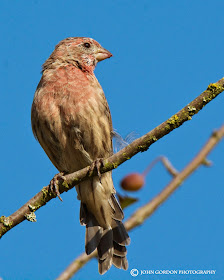Sept 21 2014 Iona South Jetty Richmond BC Sunny 24c
When I arrived at Iona for the flood tide, the jetty was already very crowded. I wondered whether any birds would tolerate all the foot and bicycle traffic. I decided to keep to my plan and hope for the best.
I was partially right, due to the large numbers of people only a few birds showed themselves for the first two kms. At the three kms marker things began to change, a flock of Western Sandpipers circled around me looking for a place to roost.
 |
| Western Sandpipers (Calidris mauri) |
The birds suddenly flew away when a River Otter came up out of the water and spooked the flock.
 |
| This River Otter came out to check the sandpiper flock. There were plenty of salmon in the area and the otters were having a feast. |
Close to the end of the jetty a pair of American Pipits were feeding on insects and Savannah Sparrows flew from rock to rock, their bright yellow lors standing out again the blue of the water. The light was getting better all the time and I really appreciated not having to lug a big lens and tripod with me all the way to the end of the jetty.
 |
| Savannah Sparrow (Passerculus sandwichchenis) |
It was at the very end of the jetty that my efforts paid off when I spotted four Sanderlings resting on the rocks. Slowly I crept closer and closer being careful not to be cut off by the rising tide and keeping my profile below the horizon. My only concern was a rogue wave. Fortunatly there was only one which forced the birds within even closer shooting range.
 |
| Sanderling (Calidris alba) |
 |
| Heres comes a second rogue wave and the birds were gone..just like that! |
 |
| After the rogue wave the birds flew closer before flying away. |
It was time to make my way back when another birder spotted a Wandering Tattler. The sandpiper was hunting for food. It would wait for a large wave to hit the rocks then pounce on any small crabs as they scuttled around in the backwash, a very ingenious and productive method.
 |
| Wandering Tattler (Heteroscelus incanus) |
 |
| Surf Scoter (Melanitta perpicillata) |
As the sun began to wane I composed this shot of the Double-crested Cormorants on the pilings all the time waiting for a decisive moment when one of the birds would fly into roost. Put your thumb over the bird landing and see how it changes the 'feel' of the image.
 |
| Double-crested Cormorants (Phalacrocorax auritus) |
"It's never too late to start birding"
John Gordon
Langley/Cloverdale













































